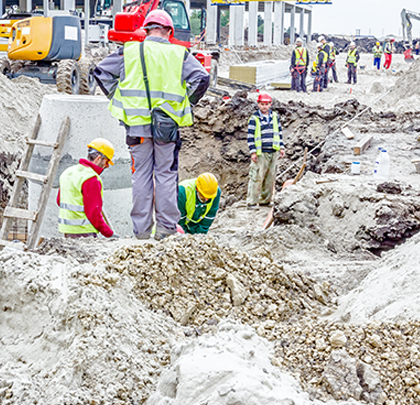Voluntary safety and health self-audits can be a critical part of any company’s regulatory compliance efforts—as well as further the overall goal of creating and maintaining a safe place to work. But, what if a self-audit identifies certain safety deficiencies? What should be done and is this necessarily a bad thing? Also, does it matter if the audit was conducted by a company employee versus a third-party auditor? Furthermore, what if you retain an outside attorney to oversee and control the audit—does that change anything? Finally, what happens if an OSHA inspector shows up and asks for records of any safety audits conducted during the past 5 years—do you have to disclose them and what influence might the records have on an ongoing OSHA investigation? The answers to these common questions may have large implications on your potential regulatory exposure and should be taken into consideration when charting your future safety activities.
SAFETY AUDIT IMPACTS
The results of safety audits may have a wide range of impacts on your business. As a preliminary matter, if you do decide to perform a self-audit, you should be prepared to implement any required changes to eliminate and/or mitigate any discovered hazards. If you fail to do so, and OSHA later shows up, you could receive a “willful” violation for allowing a known hazard to exist at your workplace. In certain cases, you might even expose yourself to criminal penalties.
In addition to making your workplace safer, self-audits also may assist with establishing certain legal defenses. First, conducting safety audits shows you are attempting to not only discover safety hazards, but are also attempting to ensure compliance with your existing safety plan. Conducting workplace inspections—including self-audits—is one element of the “unpreventable employee misconduct” affirmative defense that may be raised in response to an OSHA citation. Another element of this affirmative defense is to have and enforce a disciplinary program related to the discovery of any employee safety violations.
As a result, conducting audits and then disciplining any employees who are not following your existing safety rules will establish two of the four required elements to establish this defense to an OSHA citation (the other two elements are having work rules addressing the cited hazards and training your employees).
ATTORNEY-CLIENT PRIVILEGE
One popular misconception is that simply labeling safety audit results/reports as “confidential” or subject to the “attorney-client privilege” will automatically shield the audit reports from OSHA inspectors. If you retain an attorney for the purpose of the attorney providing you with legal advice and recommendations relating to your safety compliance, and an attorney in fact heads the audit (e.g., conducts the investigation and/or retains a third-party auditor), the attorney-client privilege may protect the disclosure of the audit results. However, if you retain a third-party auditor directly and simply copy your in-house or outside attorney on the audit results, you are certain to face an uphill climb in protecting the audit results from OSHA.
Furthermore, based on controlling case law and legal precedent, OSHA may obtain records of safety audits conducted by your liability insurance carrier. OSHA’s stated policy is that it will not “routinely” request “voluntary self-audit reports” at the beginning of an inspection or use the audits to identify hazards on which to focus an inspection. However, in the 2011 case, Solis v. Grinnell Mut. Reinsurance Co., a U.S. District Court in Illinois upheld OSHA’s right to obtain such records by subpoena. In holding as it did, the Court rejected the argument that enforcing OSHA’s subpoena would have a “chilling effect” on insurers conducting safety audits to mitigate losses.
CONCLUSION
Hazard identification and mitigation—as well as ensuring compliance with existing safety practices—is a critical part of any safety program and should remain as such. The above factors, however, should be considered when determining how to proceed with any voluntary self-audits. ■

About the Author:
Michael Rubin is a partner in the law firm Goldberg Segalla, where he serves as chair of the OSHA and Worksite Safety Practice Group. Michael has counseled clients across multiple industries regarding the defense and management of OSHA inspections and citations. He has on-the-ground experience conducting accident investigations and represents companies at all stages of OSHA enforcement proceedings. He frequently provides safety and risk-avoidance workshops on best practices for minimizing OSHA liability. He can be reached at 716.844.3477 or mrubin@goldbergsegalla.com.
_________________________________________________________________________
Modern Contractor Solutions, October 2017
Did you enjoy this article?
Subscribe to the FREE Digital Edition of Modern Contractor Solutions magazine.

How Your Voluntary Safety Audits Can Help (or Hurt) When OSHA Shows Up


